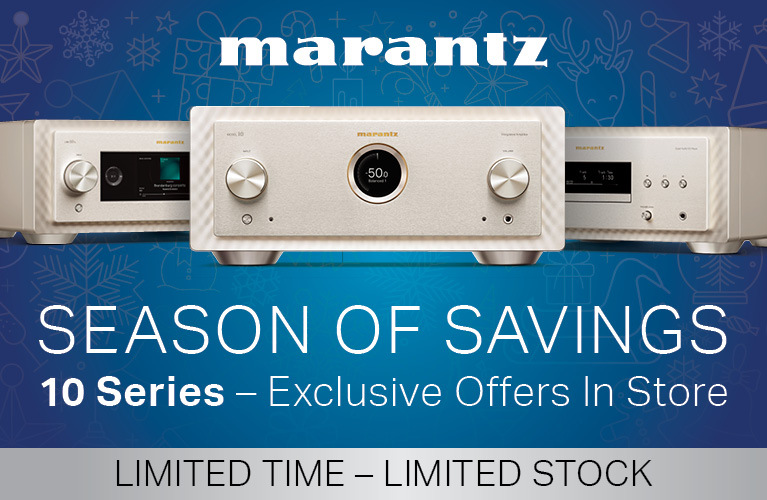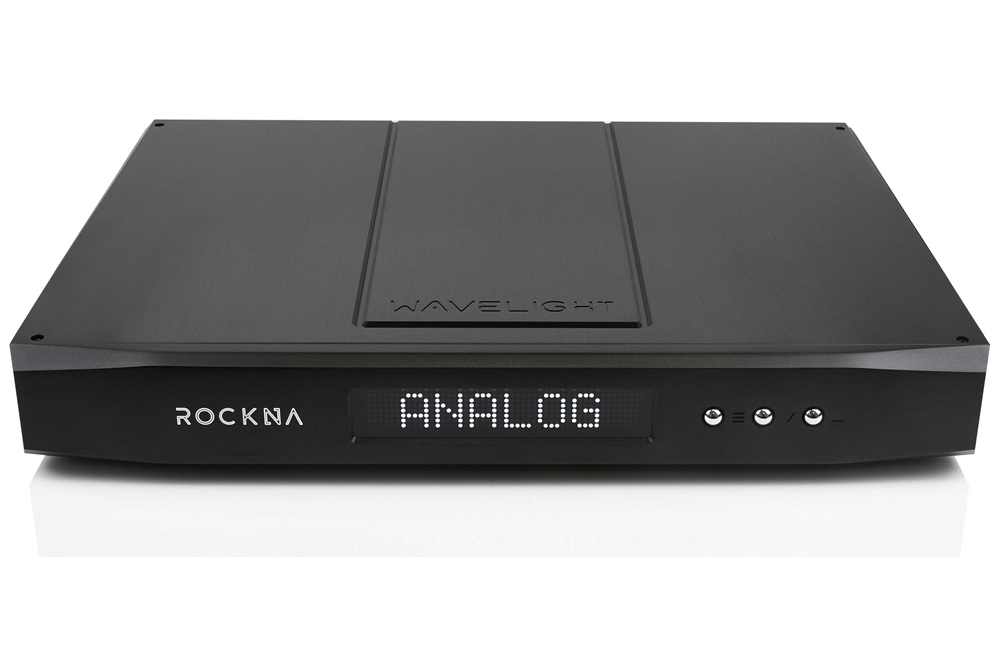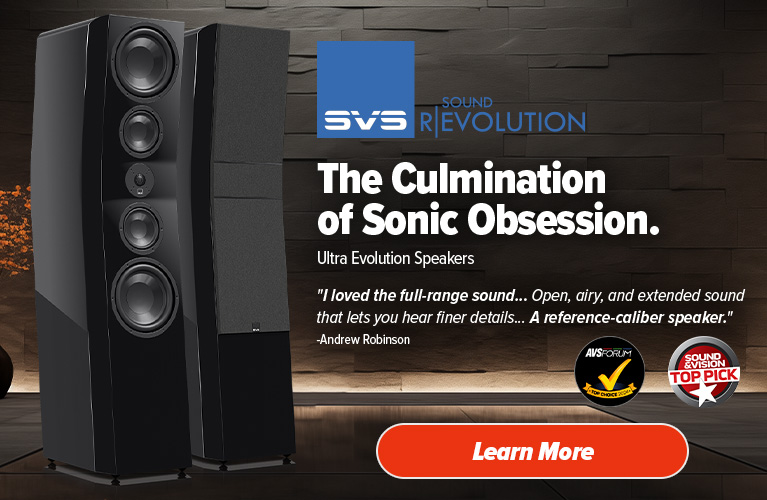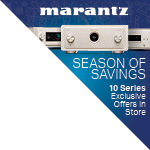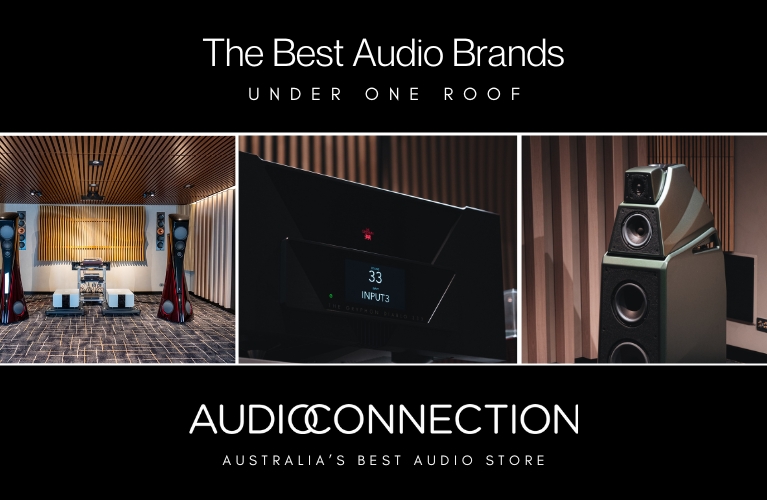When Australian importer Audio Heaven casually waved the wand of temptation about reviewing Rockna Audio’s latest digital-to-analogue converter, I was all restrained excitement. Here’s a company which has garnered unanimous acclaim across the globe for making advanced proprietary-technology digital products from an unlikely birthplace. Not only did this assignment promise good, good, good vibrations but it’s a product hailing from Romania which is simpatico with my own paternal Germanic-Romanian heritage. So, Rockna Audio’s newest offering, the rather elegant slimline entry-point Wavelight DAC arrives, fresh from the former Eastern Bloc, with a potent musical pledge combining a proven alternative methodology with a twist of 21st century tech.
Musica Viva
To the benefit of the industry at large, we’re seeing more Eastern European countries strutting their considerable audio chops in the high-end space. Estelon from Estonia, Bulgaria’s Thrax, Serbia’s Karan Acoustics, Reed from Lithuania and more. All should ring a forcefully resonant bell. Romania’s Rockna Audio has earned world-wide respect and has established itself as an innovative maker of high-end digital wizardry.
Music flows abundantly through Romanian society. Modern Romania excels in the arts. Perhaps as a form of practical expression drawn from the country’s cultural richness and artistry, digital audio specialist Rockna has articulated its own creative muse, enriching the diversity of the audio industry’s mosaic.
While I wasn’t born in Romania, the country’s creativity inherently runs through my family’s arteries. In me, it’s also derived from my uncle Sergiu Comissiona, a violin virtuoso who later became a renowned conductor with some of the world’s best orchestras. He went on to hold many leading board positions, with key appointments as Music Director for the New York City Opera and the Asian Youth Orchestra. To my chagrin he bypassed an invitation to become the Sydney Symphony Orchestra’s resident conductor for the same post with the Baltimore Symphony Orchestra. I could have gotten so much closer to him before his passing.
This writer nostalgically recalls long summer afternoons with the family animatedly (loudness switch ‘ON’) talking music, film and literature all punctuated by a parade of abundant Romanian gastronomy. Oh, what orchestral tour de force… usually an intro of roasted eggplant, then a first movement (not literally) of stuffed cabbage rolls accompanied by a side melody of grandfather’s signature creamy hand-beaten polenta. Then the crescendo coda: juicy plum-filled dumplings… Pure, earthy food for the soul.
Back to audio. Rockna’s (for short) stable of products is crowned by the highly-regarded FPGA/discrete-ladder-DAC module-based Wavedream converter and companion Wavedream NET Server/CD Transport, with both components being the products of advanced design and expert engineering. These company flagships have garnered wide praise for competing at elevated levels of performance. And as much as Rockna Audio is mostly associated with superb digital products, the company launched in 2000 – after being officially founded by Nicolae Jitariu in 1999 and who continues at the helm – with the ‘Heart’ Class-A monoblock amplifiers followed by a matching preamplifier and CD player. From then on, several amplification components were launched until in 2005 Rockna’s first DAC appeared. The relatively low cost RD-2 DAC was to be the start of a wonderful friendship with the art of digital audio design.
I wanted a further insight into Jitariu’s background and his ideas. I reached out and asked for clarification and his take on R2R versus Delta/Sigma conversion methodologies.
We are working as a team, I cannot claim I do all the work myself. We started making amplifiers back in 1999, and ended up making highly specialized digital devices. We are self-taught, this process is driven by the desire for making unique products. For about 10 years (2005-2015) we did digital consulting for many companies in the high-end audio field.
The R2R and Delta/Sigma discussion can be endless and cannot be closed in a few phrases. Both technologies can be good or bad, the key is implementation. With our other brand Audiobyte, we took the Delta/Sigma route, but without using an off-the-shelf chip like ESS or AKM. In terms of sound quality, I will say that Delta/Sigma spells precision, while R2R spells body and smoothness. Delta/Sigma usually measures better, but in case of DACs, seems measurement results do not tell much about sound quality.
Regarding the Wavelight, the internal signal path is not necessarily fixed, it can be firmware-version dependent. Even more, in the case of the (future) hybrid decoding mode, the signal path can be radically different just by user (menu) selection. Generally, the internal structure contains an asynchronous input module for clock and data recovery, followed by an 8 times custom upsampler. The upsampler response is user-configurable and has internally 60-bits of resolution. Then, a complex sub-system formed by FIFO buffers and an advanced digital PLL takes care of the internal retiming. In a following firmware version, a hybrid volume control section will come next, working in 32-bit depth, so no loss for 16- or 24-bit signals. In the end of the digital sector, the R2R ladders are driven by specialized logic. A current-to-voltage conversion happens prior to analogue volume control, also after it, as the volume control output is in current.
Dreams and Light
Given the unequivocal critical and commercial success of the flagship Wavedream components, Rockna launched on a journey to design a more affordable stablemate. The new Wavelight would preserve a large percentage of the flagship’s performance quality, adding a couple of modern features while continuing the company’s preferred ladder DAC R2R digital conversion methodology.
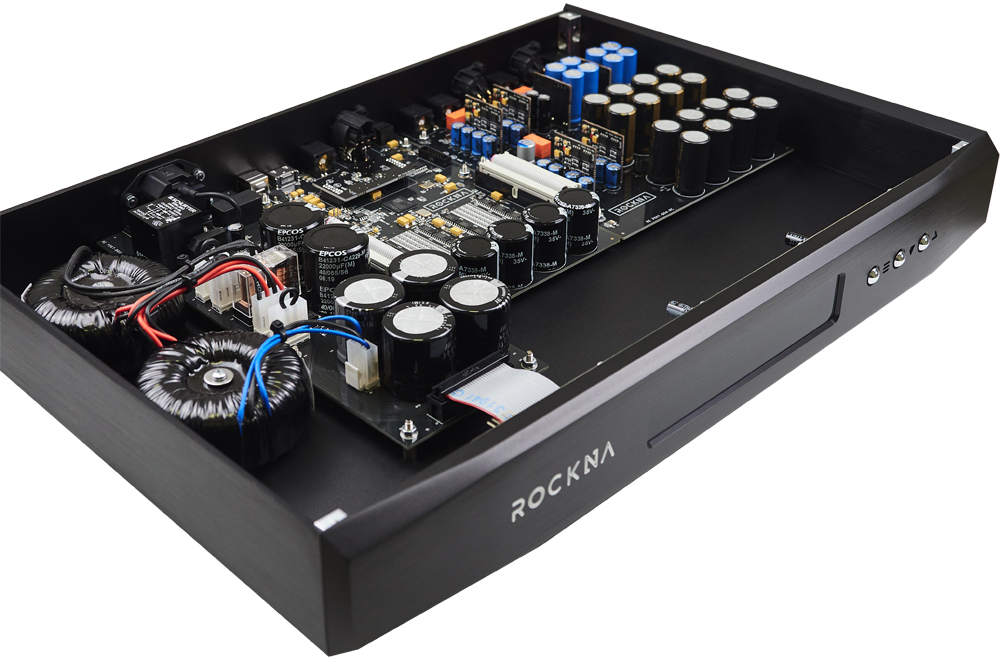
While it may be more affordable, the Wavelight bears very little in the way of cost compromise. Externally, the chassis is beautifully machined and precisely assembled from heavy-gauge anodised and exquisitely-brushed aluminium (our review sample came in silver, with black being the other option). That in itself adds considerably to the overall cost, let alone the first impression of overall quality design. Then, there’s the bespoke R2R modules Rockna has produced for its digital conversion methodology, a development cost which needs to be recouped across all the company’s products which adopt them. Further, the Wavelight DAC does not skimp on power supply solidity, component quality and connectivity options. The custom Wavelight App, which provides full system control, would also have incurred extensive R&D, coding and field testing. Given the asking price in Australia, Rockna’s Wavelight represents fair value – should it perform commensurately. That, we will talk about below but first we’ll check-out what we have at hand in terms of technology and functionality.
So Rockna employs its own FPGA-based software-controlled digital conversion which basically provides on-going opportunities for firmware updates. This methodology becomes the Wavelight’s ‘hardware’ upgrade meaning that, by default, it controls the R2R module digital architecture. So there’s a degree of protection against obsolescence in the design of Wavelight. A massive coding and mathematical undertaking has yielded processing which Rockna claims is “studio quality” with options for a number of user selectable linear, minimum phase, hybrid and NOS (Non-Over-Sampling) filters.
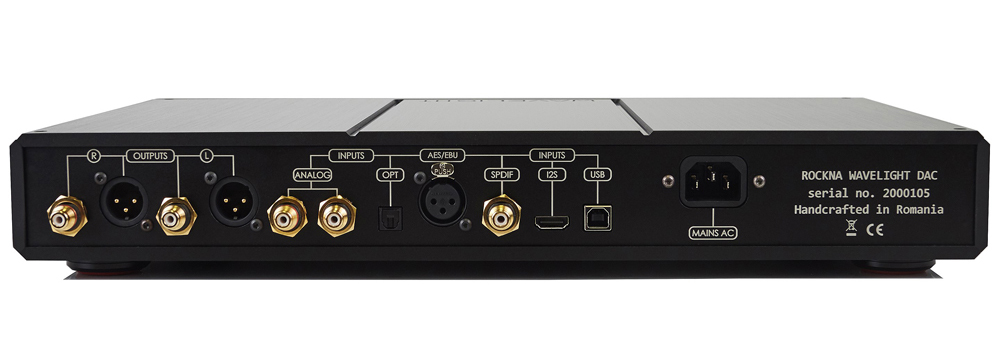
Further digital refinement is provided via memory buffers, a digital phase-locked-loop (DPLL) strategy and a custom input clock-decoupling scheme, all responsible for extremely low jitter levels. Rockna has adopted a ‘Femtovox2’ clock architecture which was selected for its “analogue sound” (not sure why that term is still part of the digital-describing lexicon). While the Wavelight operates in the pure R2R mode I’ve been describing, Rockna is currently developing what it calls ‘Hybrid Mode Ladder’, an alternate playback option which can be switched on the fly. The ‘Hybrid Mode Ladder’ topology is to be available soon via download (no date given at the time of writing).
The on-board power supply is substantial and features 100,000 uF of capacitor storage/filtering – that’s to the level of some powerful integrated amplifiers. Two large toroidal transformers are used independently for the digital and analogue circuitry. High precision components are applied throughout including ‘audiophile-grade’ coupling capacitors.
Rockna states the Wavelight’s resolution as 32-bit with PCM support up to 384kHz and from DSD64 to DSD512 via USB and I2S. S/PDIF coaxial (RCA) and AES/EBU are capable of 24-bit/192kHz and DSD64. The Toslink optical input resolves 24-bit/176kHz and DSD64. So that takes care of five digital input options. Further, the Wavelight provides a single analogue input via unbalanced RCA so in conjunction with the analogue domain digitally-handled volume control (avoids bit-stripping at low volume settings) the Wavelight is also, effectively, a one-source very transparent line preamplifier. The analogue outputs are catered to by both unbalanced RCA and balanced XLR. All the Wavelight’s features and functions are available for adjustment via the bespoke App which talks directly to the DAC (in other words, the Wavelight does not require a network connection to communicate with the App).
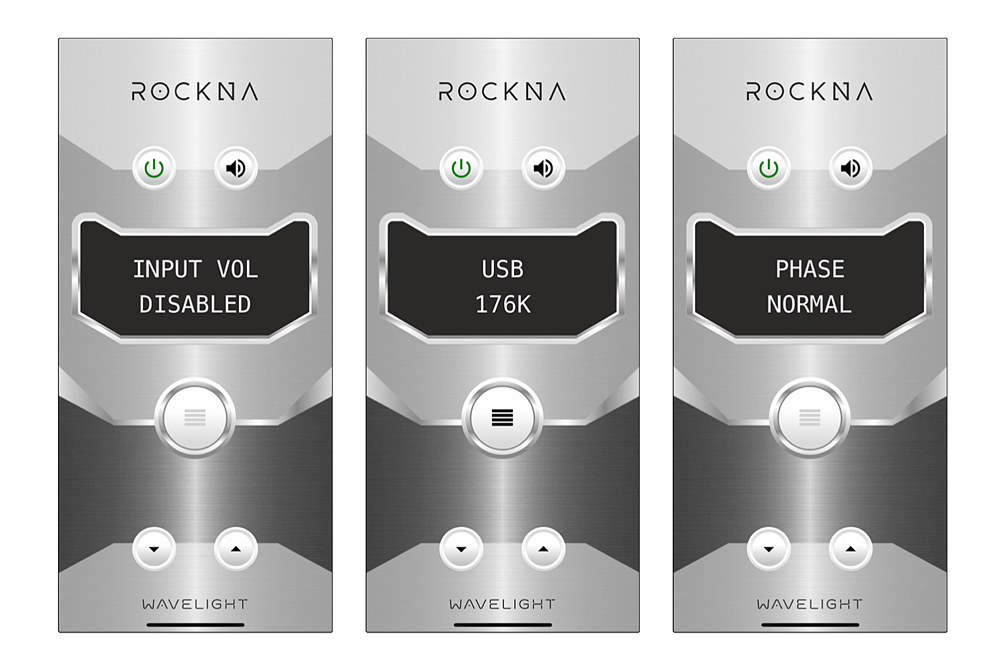
In addition to the volume control, Rockna has provided user-selectable gain settings of 0, 6 and 9.5dB for the RCA output and 8, 14 and 17.5dB for the XLR output. In conjunction with a low output impedance of 50 ohms, this makes for universal input compatibility with integrated and power amplifiers. Signal-to-Noise Ratio (0dB) and dynamic range have been quoted as 117dB while Total Harmonic Distortion plus Noise (THD+N) is said to be -0.005%. Overall, the engineering decisions and execution are very intelligent indeed.
RockNow
Given that the company name was arrived at by combining its country of origin’s international code (RO for Romania) and the rock music genre, I started by honouring the latter with some Colour Haze, one of my favourite Stoner Rock bands. From the band’s self-titled album, the track “Mountain” is all of beautifully delicate and magnificently powerful, even if low-fi as per the band’s style. Rockna’s Wavelight precisely handles the subtleties and accents of the guitar’s pluck-picks through the gentler sections while fully presenting the power of the crescendo(s). At no stage did the low-ish production values introduce any harsh nasties. Colour Haze (the album) may be classed as low-fi to fit with the band’s raw style but it’s effectively not too-bad-a-recording.
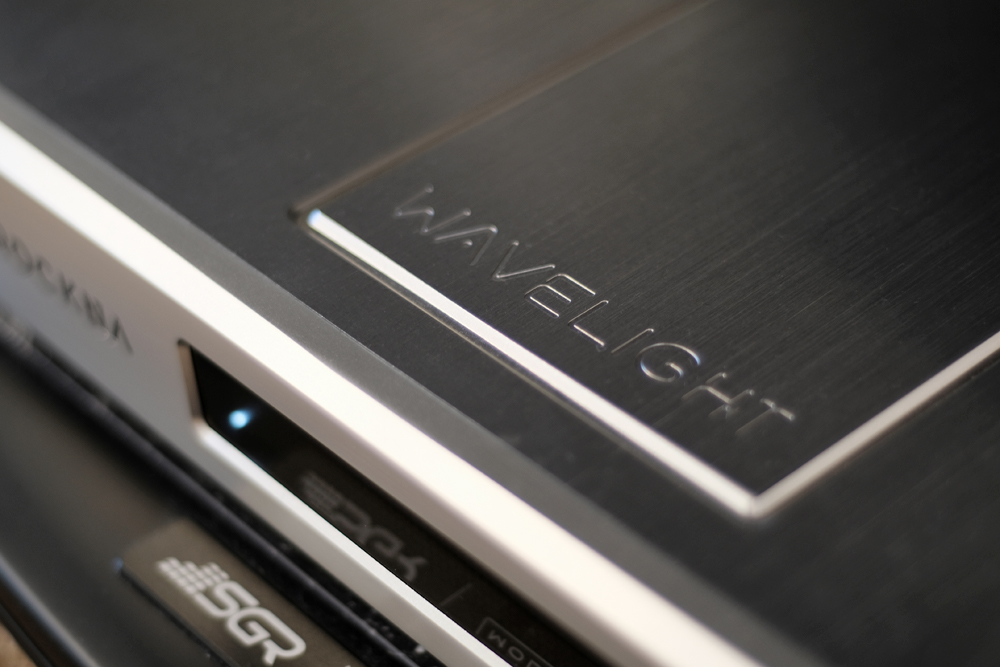
So now on to some finer recordings, production-wise. The Nicolas Parent Trio’s music is atmospheric, subtly delicate and always captivating. The trio’s releases always benefit from superb recording techniques, production and mastering. For example, on the ensemble’s Mirage album and the track “Desért Blanc”, the Wavelight’s timbrel powers shone. The nature of the sonic signature, what makes the listener recognise a particular instrument, bore excellent tonal truth. You just delight in Parent’s guitar tones and his attacking finger picking, with the Wavelight tracking all the music’s complexities effortlessly (as always, your accompanying gear needs to be simpatico with those traits).
Similar authenticity is displayed on Trio Elf’s MusicBoxMusic where the track “Krumm” shows beautiful piano tone supported by a tight and punchy duo of bass line and kick drum. There’s always immaculate resolution of detail and precise separation of instrumental strands within the overall melodic make-up of the music. Excellent music-making powers, Wavelight!
Orchestral works sounded wonderful via the Wavelight DAC. I wallowed in the sheer extravagance of the sonic field projected from the speakers on Sibelius’ Violin Concerto with Pinchas Zuckerman on violin with the Chicago Symphony Orchestra conducted by Daniel Boremboim. Equal pleasure was derived from the purity of the violin and the intricate way in which the Wavelight tracked and controlled maestro Zuckerman’s agility and delicacy with his instrument. Ditto for tracking the ebb and flow of the orchestra as a whole. Faultless.
Good female vocal recordings are always an enjoyable, yet telling, auditioning material for evaluating a component’s midrange performance, of course. Rather than the over-used show-popular recordings (you know the ones…) I prefer the lesser-known yet, for me, much more enjoyable artists whose creations steer away from middle-of-the-road safety. Enter Ani DiFranco with her societal and personal politics song writing prowess and aggressively dexterous guitar playing. From her live Living in Clip, “Willing to Fight” calls us to action and the Wavelight provides further motivation to actively… listen. The drums power-through, manifesting great dynamic contrast (especially the snare). DiFranco’s vocal purity and emotive expression combine in a palpable and vivid presentation, slightly forward of the speaker plane in a most enjoyable way. It’s all locked-in dead centre in a wide and airy soundstage.
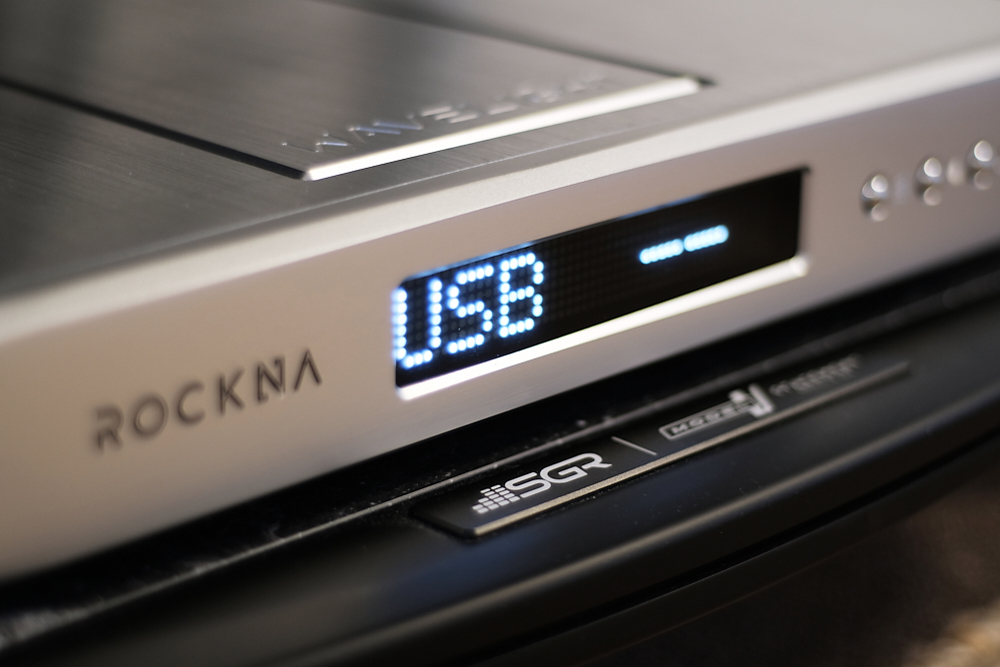
It was while listening to female vocals that I found the Wavelight had an ever-so-subtle midrange bump which, in systems that are neutral, will manifest itself as an added presence. In super-complex music this slight forwardness exhibited very minor congestion but only compared to my much more expensive Totaldac d1-direct in-house DAC. Back-to-back with a DAC at its price point, these points may be moot.
At the other end, male vocals’ lower registers were not exaggerated nor chesty or smeared. A perfect illustration of these traits is via Leonard Cohen’s deep growl on “In My Secret Life” from The Essential Leonard Cohen where his almost spoken vocals are clearly separated from the instrumentation while exhibiting the well-known Cohen tonality with precision, authenticity and excellent transmission of… emotion.
Conclusion
Through the few weeks the Wavelight was in-situ, this excellent Romanian DAC did not skip a beat. The App behaved as designed (barring a random and infrequent self-refreshing bug, cycling through the HOME screen, which could be halted by simply reloading the App) while sonic performance was exceptionally high at the price point (and well above).
Wavelight presents a colourful rendering of all types of music. By colourful I’m referring to a wonderfully complete set of tonal textures with broad levels of detail and resolving of melodic structure. Wavelight also ticks all the boxes a good DAC should; it’s generous in terms of input options, provides a wide range of playback resolutions into high DSD territory while the analogue input (with its well-implemented volume control) is pure genius. That last feature is something more DAC builders should offer.
The proprietary digital wizardry places it among the advanced DAC protagonists whose products adopt fully-bespoke technologies – dCS and MSB Technology come to mind first – with most of those being priced way above the Wavelight. It’s also an attractively styled unit which is well-built using quality materials and intelligent engineering.
Given the preceding descriptions, I’d have to enthusiastically recommend the Rockna Audio Wavelight as a high-performing value DAC with worthwhile points of difference. This is most definitely not a cookie cutter digital product. Felicitǎri Rockna!
… Edgar Kramer
This email address is being protected from spambots. You need JavaScript enabled to view it.
Associated Equipment
- Speakers — Wilson Audio Alexia Series 2, Axis Loudspeakers VoiceBox S (nearfield monitor), Vermouth Audio Little Luccas Mk.II
- Amplifier — Gryphon Audio Antileon EVO
- Preamplifier — Supratek Cortese, Lightspeed Attenuator LDR passive
- Sources — Digital:432EVO High-End Music Server Roon Core, Yamaha CD-S2100 transport, Totaldac d1-direct DAC. Analogue: Transrotor Crescendo with Konstant Studio controller, Reed 1X Tonearm with upgraded internal wiring, Shelter Harmony cartridge, The Funk Firm Houdini cartridge decoupler, Supratek Cortese & REDGUM Audio RGPH2 phono stages
- Processor — DEQX PreMate
- Cables — Vermouth Audio Reference loom,Vermouth Audio Black Pearl Mk.II loom
- Audio Rack — SGR Audio Statement Model V
- Acoustic Treatment — Vicoustic Multifuser Wood, Wavewood Ultra, Cinema Round Premium and Super Bass Extreme
- Miscellaneous — GigaWatt PF-1 EVO, Les Davis Audio Viscoelastic CLD discs, VRC Vinyl Record Cleaning systemplus miscellaneous accessories
Rockna Wavelight Digital-To-Analogue Converter
Price: AU$7500
Warranty: Two Years
Australian Distributor: Audio Heaven
+61 (0) 412 650 723
www.audioheaven.com.au
Rockna Audio
str. Plopului nr. 5
720145 Suceava
Romania
+40 770 125 694
www.rockna-audio.com

